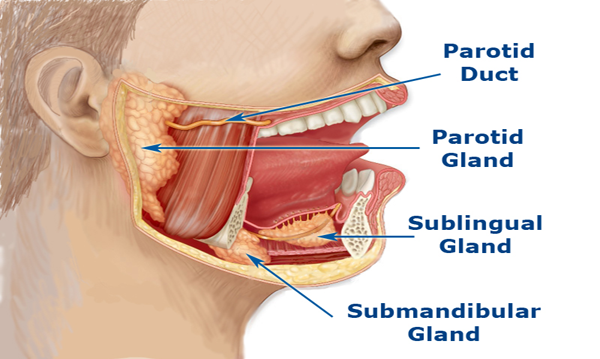ParotidTreatment of salivary diseases is broadly classified into two categories: medical and surgical. Selection of treatment depends upon the nature of the problem. If it is due to systemic diseases (diseases that involve the whole body, not one isolated area), then the underlying problem process must be treated. This may require consultation with other specialists. If the disease process relates to salivary gland obstruction and subsequent infection, antibiotics are used. Sometimes instrumentation of the ducts will be needed. If a mass has developed within the salivary gland, removal of the mass may be required. Most masses in the parotid gland area are benign. When surgery is necessary, great care must be taken to avoid damage to the facial nerve which lies within this gland. When malignant masses are present in the parotid gland, it may be possible to surgically remove these masses and preserve most of the facial nerve. Radiation treatment will often be recommended after surgery. This is typically administered four to six weeks after the surgical procedure to allow adequate healing before irradiation. 
The same general principles apply to masses in the submandibular area or in the minor salivary glands within the mouth and upper throat. Benign diseases are best treated by surgery alone, whereas malignant diseases may require surgery and postoperative irradiation. If the mass in the vicinity of a salivary gland is a lymph node which has become enlarged due to cancer from another site, then obviously a different treatment plan will be necessary. Such treatment can be very effectively directed by an otolaryngologist-head and neck surgeon. In summary, salivary gland diseases are due to many different causes. These diseases are treated both medically and surgically. Such treatment is readily managed by an otolaryngologist-head and neck surgeon with experience in this area. |

+91 - 95661 39630
+91 - 94441 68963



